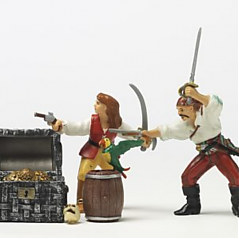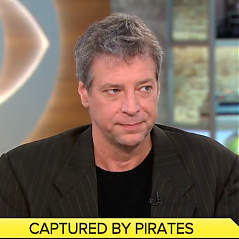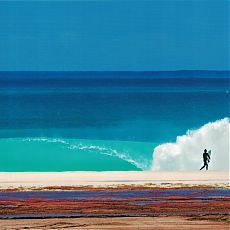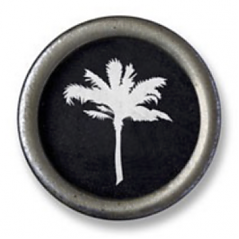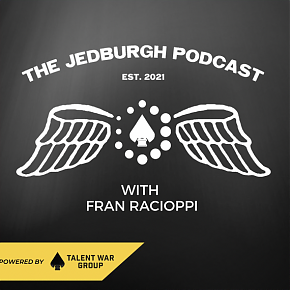The Real Pirates of the Caribbean
Adventure journalism in Southern California
August 2019
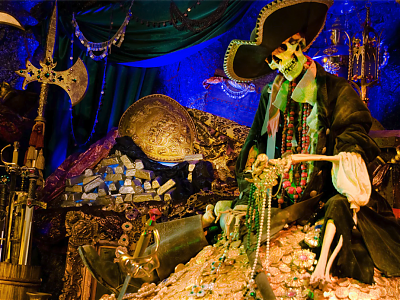
The Pirates of the Caribbean ride at Disneyland cast a profound, immersive spell on me as a boy, years before the movies existed. The raft floats past a fake Louisiana plantation, where no slaves are bought or sold but real people sit around white tablecloths in a restaurant my mother always said was too expensive. Banjo music, fireflies. Blue twilight on the bayou. A deceptive calm before the raft moves from the watery parish of “New Orleans Square” to some burning island in the Caribbean. The smell of chlorine.
I know more now about pirates than I did as a child: I was kidnapped and held hostage by a Somali pirate gang from early 2012 to late 2014. I’d made the mistake of traveling to Somalia to research a book. In 2005, when Somali pirates first hijacked a major vessel, they sparked a revival of an ancient crime that had lain dormant in the world, with a few exceptions, for almost two hundred years. The topic had riveted me then as a sign of historical breakdown, a fascinating old-new phenomenon.
Now, more or less recovered, back in California, I found the strange hokiness of that Disney ride tugging at my memory. So I drove to Anaheim one recent morning and floated through the chlorine canals. We used to wait hours in that snaking line, when I was a boy, for fifteen minutes of dark fascination. But now, the wild interior world, with its animatronic drunkards and growling pirate captains, its blade-killed skeletons on piles of glittering jewels, left me empty. “Ye come seekin’ adventure and salty old pirates, eh?” said a talking skull. “Sure, you come to the proper place. But keep a weather eye open, mates—”
We drifted past a burning Caribbean rampart, where laughing ruffians fired cannonballs at a two-masted brig. The pirate ship fired back; orange splashes flowered in the water. I loved that effect when I was young. You saw the guns recoil, you saw the cannonballs hit, but nothing flew and no one got hurt. Listening carefully to shouting voices on the ship and on the rampart, I realized (for the first time) that the ride had a specific setting. We were somewhere along the Spanish Main, in the seventeenth or eighteenth century, watching a vague colonial struggle between Spain and Britain. References to Blackbeard tilted things toward the eighteenth century. References to Captain Jack Sparrow—added to ride since 2006 because of the Johnny Depp films—blurred things up again.
In 2005, the press had been quick to scuttle the “romance” of Somali pirates, because the African gunmen were supposed to be nothing like the dashing Caribbean buccaneers of the American imagination. Somali pirates were rumored to be poor and desperate and cruel. The problem with this comparison was not the level of cruelty or desperation among Somali organized criminals—it was the deep layer of bullshit we’ve larded on the memory of pirates in our own backyard.
The thumping cannons on the Spanish rampart reminded me of lying on a thin foam mattress in a concrete prison house in Somalia, trying to sleep at night while mortar fire flashed in the distance. What looked like a thunderstorm outside was the slow, desultory combat across a contested line between the Somali regions of Galmudug and Puntland. I heard it only once or twice. It was the sound of civil war, and real Somalis died.
We floated past a ransacked town, along a burning Caribbean waterfront, where three weeping animatronic women used to stand roped together, under a cloth banner, with a crimson-dressed madam presiding under locks of flame-red hair and a soaring crimson hat.
AUCTION, the banner used to read. TAKE A WENCH FOR A BRIDE.
This diorama’s been changed. Visitors found it sexist, retrograde, offensive; some complained that it glorified human trafficking. Now the scene shows the same red-haired woman running an auction for gold and jewels. Instead of a frilly madam’s hat and dress, she wears a leather singlet and a pirate tricorne, and she leans a blunderbuss against her hip.
AUCTION, the banner reads. SURRENDER YER LOOT.
Changing this diorama led to howls of outrage by traditionalists who clung to the Disneyland of their childhoods. Internet commenters complained about the new generation’s lack of humor, and disgust with “political correctness” ran high. Someone suggested that maybe on the next upgrade, “Disney will have the Pirates wearing pink #metoo hats and holding broom sticks rather than muskets.”
One point to make about this national controversy is that rough Caribbean pirate towns like Nassau and Port Royal were, in fact, full of prostitutes, but they probably never resorted to anything as corny as a “wench auction.” The scene was always ahistorical, but human trafficking has never been far removed from pirate work. After my release from Somalia, I wrote a feature for Businessweek about a onetime pirate financier who had turned to running a human-smuggling network for migrants from Somalia to Libya. Some of his smuggled customers were converted to hostages: the smugglers would call the migrants’ families from a desolate part of the Sudanese desert and demand a ransom to move on. Hostage-taking is just another form of human traffic, it turns out. My two and a half years in Somalia were an interlude in a dim netherland of the world economy, a chamber of horrors most Westerners never glimpse.
Which, of course, is not something you should have to explain to kids on a theme-park ride. One friend of mine who grew up in Santa Monica says she used to peer at the three animatronic women for sale (beautiful, ugly, and plain) to figure out how she might fare at the auction. That’s a terrifying train of thought for a child. I snapped a picture of the redhead with a blunderbuss and texted it to her.
“OMG,” she wrote back. “She was SO not there in the ’80s.”
I thought she seemed excited, maybe even retroactively empowered.
I couldn’t work up much personal outrage over the diorama, for or against. Kids project themselves onto the Pirates of the Caribbean, just as they’ll project themselves onto any scene, imaginary or real, because that’s how humans learn. The old diorama had seen its day, but there must be other, more pernicious influences on a child’s environment to worry about. Where do you even start? Would it be possible to scrub all the ugliness from American culture and create a perfect, nurturing, Disney-safe environment? Each individual kid would still have to cultivate inner habits of resistance and strength, since our outer environments and our inner selves are opposites, as I learned in Somalia, once and for all.
The Pirates of the Caribbean ride is deeply strange. I don’t know why it’s there. It was the last attraction overseen by Walt in person; he died before it opened. But he gave advice on the recorded voices you hear murmuring from the bayou through the burning town. These voices follow a script, and workers in 1966 asked Walt whether the volume was too low—whether all the pirate growling wasn’t too soft or obscure for visitors. Walt liked it. He compared the immersion to “being at a cocktail party.” His answer suggests the best way to read the ride—it’s a three-dimensional children’s book, designed by adults in the era of great cocktail parties. The fidelity to history was never the goal; the sense of humor clonked like a mallet. In the years of relative peace after World War II, Walt and his contemporaries tried to indulge a whole generation of baby boomers, and in that sense the ride really is terrifying. You can’t ignore the smothering, almost lunatic love implied by such a monstrous contraption, such a complete effort to hoodwink and entertain a child. The Pirates of the Caribbean is less about pirates or the Caribbean than it is about the invisible climates we all grow up in, and then try to re-create for our kids—powerful, half-conscious, protective, traumatizing, sometimes all at once. Maybe one day Somalia will have a ride just like it. Why not? Is it so hard to imagine a high-tech fantasia for Somali kids, full of deranged animatronics, shameless about a certain mythic past, out in the distant future when the nation has lifted itself into prosperity and the real pirates, like their victims, have been forgotten?
Michael Scott Moore
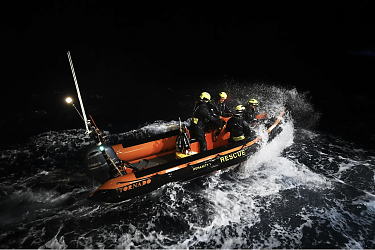
Rafts of the Medusa
Why every day on the Mediterranean is a new scandal for Europe. For both Foreign Policy and Die Zeit.
California’s Attempt at Land Reparations
How land seized from a Black family 100 years ago may be returned. The Bruce’s Beach story from a hometown angle, for The New Yorker
Day of the Oprichnik, 16 Years Later
The novelist Sorokin, the president Putin, his man Dugin, and the war in Ukraine. For n + 1.

The Rushdie Narrative
Knife and the crumbling ground beneath free speech
There Must Be Some Way Out of Here
An essay on Bob Dylan, “All Along the Watchtower,” and Somali pirate captivity.
That Mystic Shit
The life of Lou Reed in two biographies

Cambodian Seafarers Talk About Pirates
Mike visits Cambodia for The New Yorker to talk about a harrowing shared experience in Somalia
The Muslim Burial
Cambodian hostages remember digging a grave for one of their own. A sequel chapter to The Desert and the Sea
The Real Pirates of the Caribbean
Adventure journalism in Southern California. A travel essay for The Paris Review.

Antifa Dust
An essay on anti-fascism in Europe and the U.S., for the Los Angeles Review of Books
Was Hitler a Man of the Left?
A book that helped Republicans in America lose their damn minds.
Ghosts of Dresden
The Allied firebombing of Dresden in 1945 destroyed the baroque center of what Pfc. Kurt Vonnegut called, in a letter home from Germany, “possibly the world’s most beautiful city.”
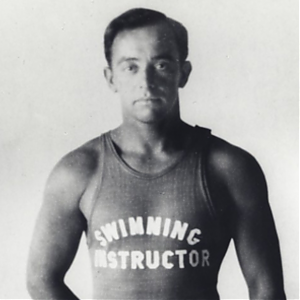
George Freeth, Biographed
The first academic treatment of America’s surf pioneer. Also, was Freeth gay?
It’s Called Soccer
Americans live on what amounts to an enormous island, defended on two shores by the sea, and we’ve evolved a few marsupial traditions that nobody else understands.
Tilting at Turbines (in the Severn River)
The morning was clear and cold, with frost on the church steeple and the cemetery grass. I had a quick English breakfast at a white-cloth table, in my wetsuit, and drove to Newnham, a village on the Severn River in Gloucestershire, parking near the White Hart Inn.

The Curse of El Rojo
I’d packed the car lightly — a bag of clothes, a bag of cassette tapes, a backpack of books, a few essential tools.













